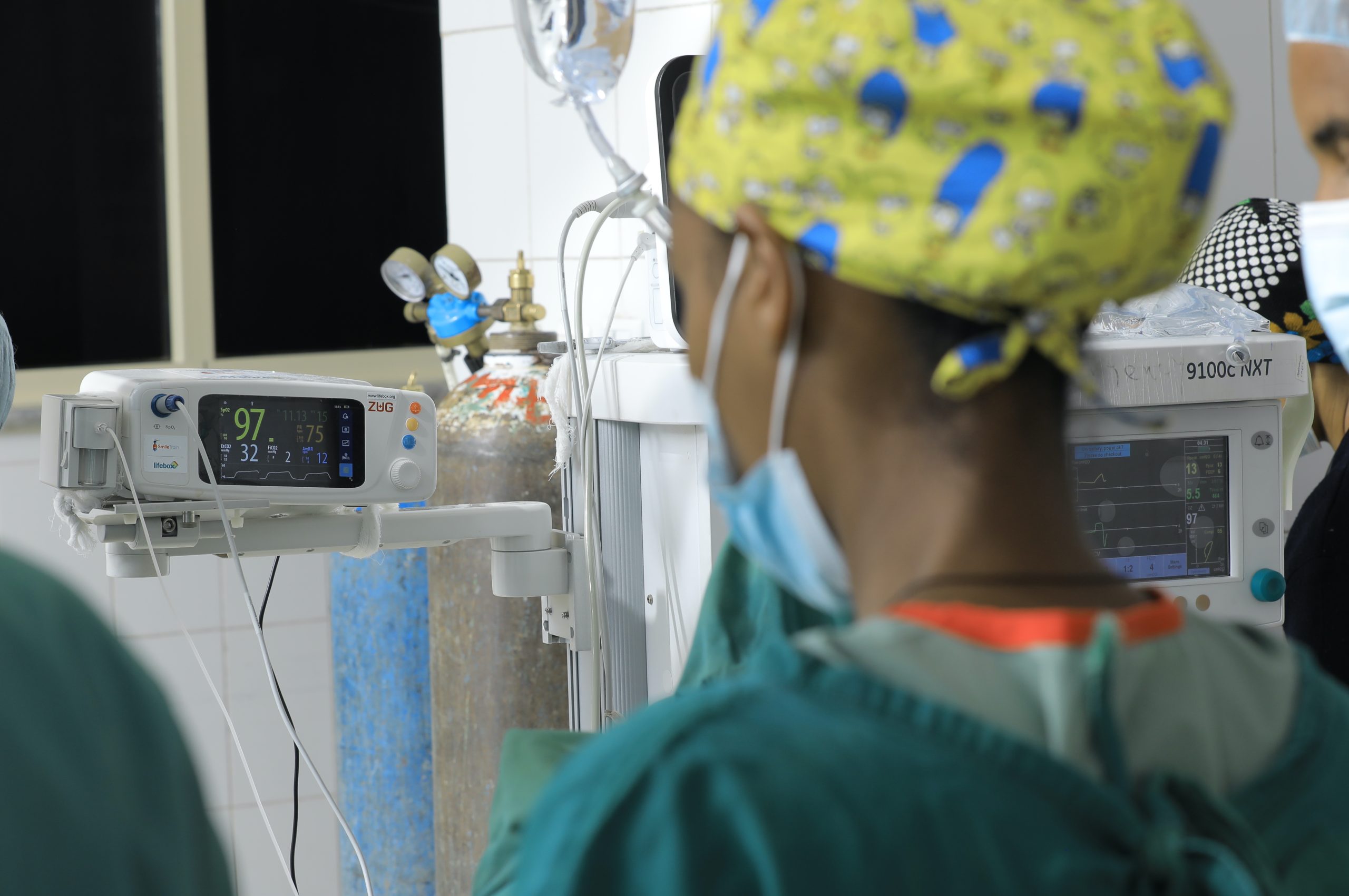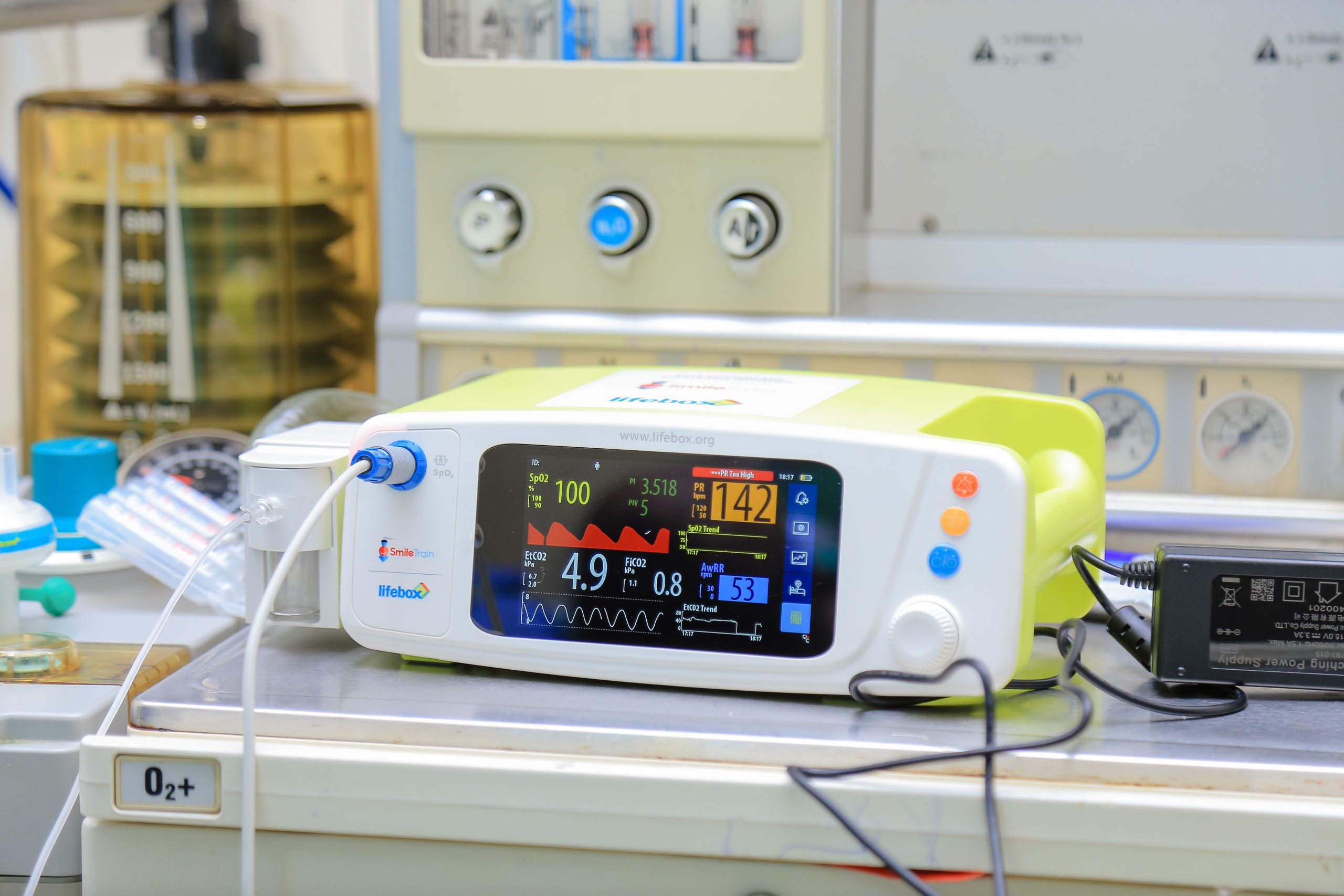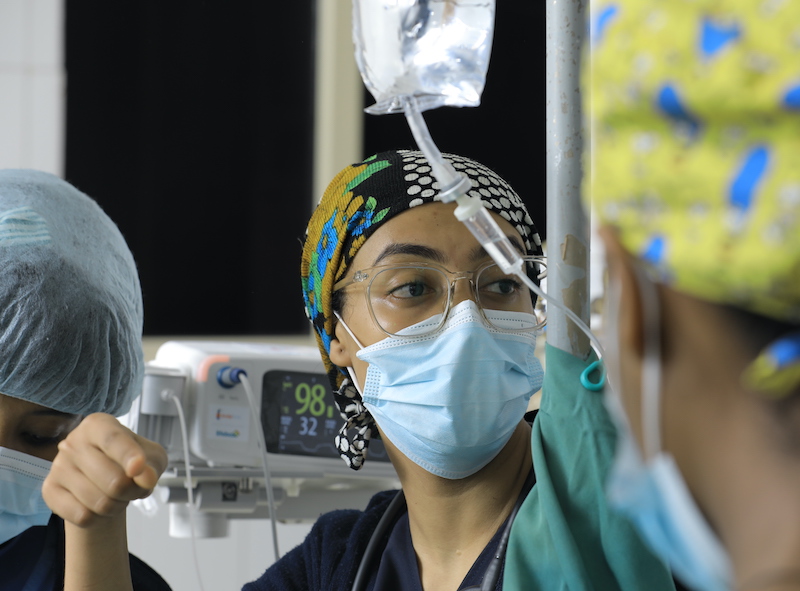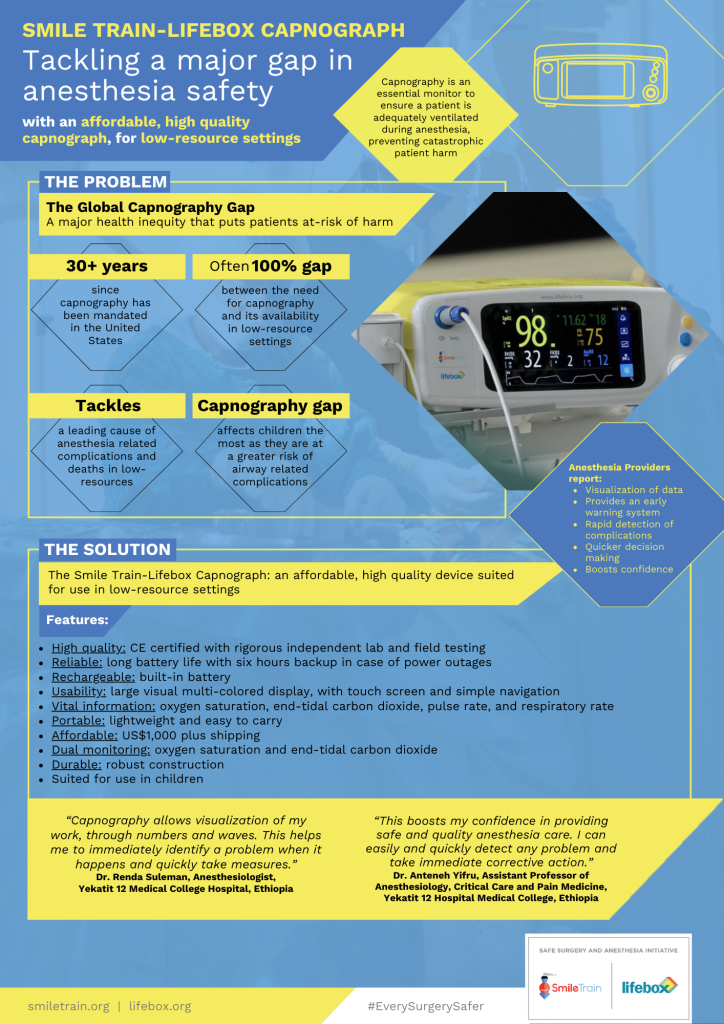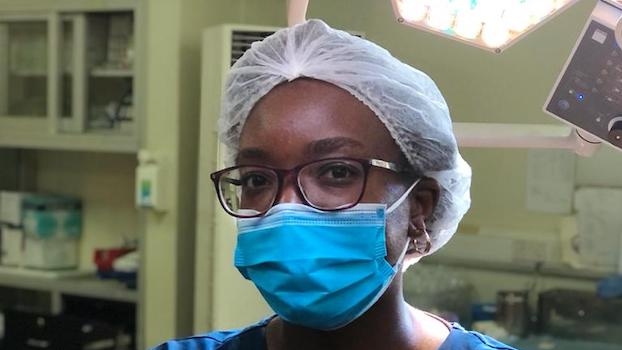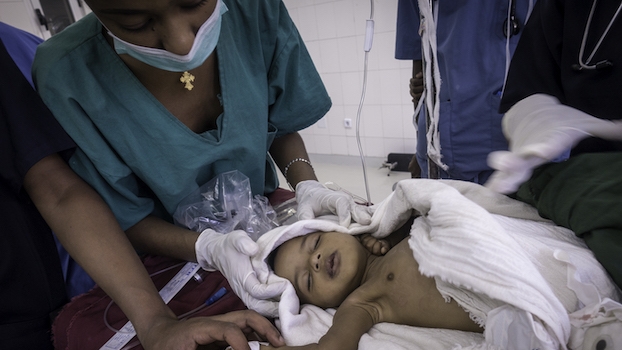Capnography is an essential monitor to ensure a patient is getting adequate oxygen during anesthesia. It has been used universally in high-income countries for decades but remains virtually absent in low-resource setting operating rooms.
The new Smile Train-Lifebox Capnograph tackles this major gap in anesthesia safety by making available an affordable, user-friendly, high-quality device with sturdy construction and long battery life. The device meets robust specifications for the monitoring of both pediatric patients and use in low-resource settings, and underwent laboratory and field testing. The device is dual parameter: providing both oximetry and capnography for safer anesthesia monitoring for patients. Read more about the product specifications here.
Capnography detects one of the leading causes of anesthesia-related complications and deaths in low-resource settings: esophageal intubation. This is where the breathing tube supplying oxygen to the patient is misplaced into the patient’s windpipe rather than the lungs. Without oxygen, a patient will suffer catastrophic harm in a matter of minutes, including brain damage and death. The risk of esophageal intubation is greater in children. But a capnograph will provide real-time data on every breath, allowing the immediate detection if a patient is not getting oxygen – this is life saving.


